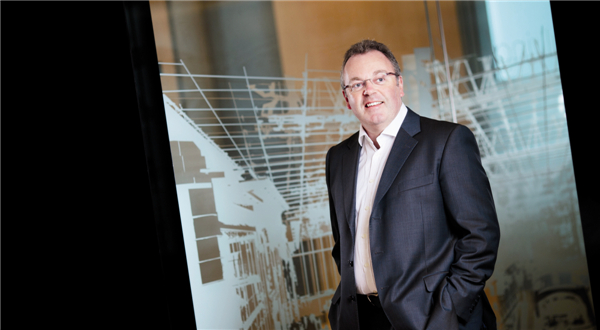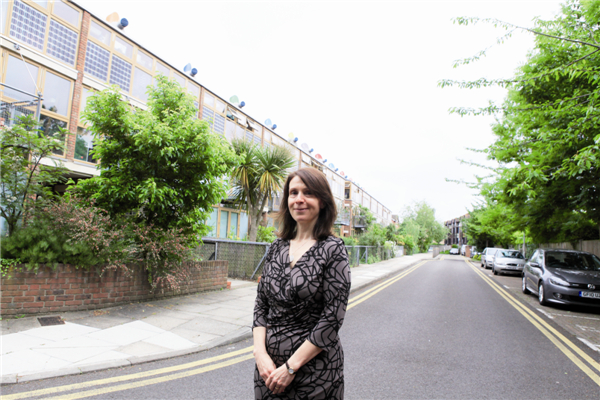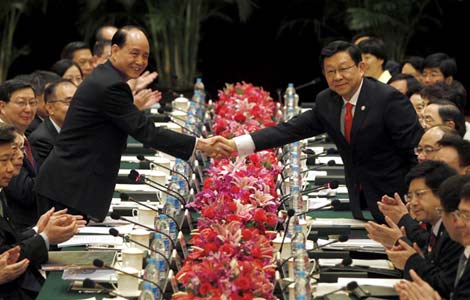A lot to bring to the table
Updated: 2013-06-22 09:00
By Cecily Liu and Yang Yang (China Daily)
|
||||||||
As European construction experts leave their mark on cities, they are teaching the country valuable lessons
China's rapidly expanding cities are generating immense opportunities for Europe's masters of planning, architecture and engineering, and attracting the interest of investors and academics.
With a home market in which new construction projects are thin on the ground, what particularly attracts European companies to China are the opportunities due to the speed, scale, and room for creativity in construction.
 |
|
Simon Blore, global managing director of Benoy |
"Working in China certainly encourages a more pragmatic approach, and as architects we need to be responsive, flexible and intuitive," said Simon Blore, global managing director of the British architectural firm Benoy.
Founded in 1947 in the English county of Nottinghamshire specializing in farm buildings, Benoy has come a long way to win flagship projects in China such as the Elements shopping mall in Hong Kong and Raffles City in Shenzhen.
Benoy employs 500 people in six countries, 320 of whom are based in China. Crucial to Benoy's success in the country is the very short time-frame for projects, Blore said.
"A 200,000-square meter leisure development in China takes on average about three years from the initial design stage to opening. In the United Kingdom, the same size project could be anything from seven to 15 years."
To understand Benoy's rapid China expansion, one must examine the country's breakneck speed of urbanization.
China's urban population was only 18 percent in 1978 when the country first started to move away from a planned economy, but in 2011 urban dwellers outnumbered rural dwellers for the first time, reaching 51.3 percent.
China's urbanization has in effect completed many European countries' century-long journey in a little more than 30 years. But more striking is the potential for growth, as the country advances toward the developed countries' norm of having 70 to 80 percent urban population.
This pace of change has placed immense pressure on municipal planning departments across the country, not only for housing but also infrastructure, transport and other facilities such as education and healthcare services.
 |
|
Sue Riddlestone, CEO of BioRegional |
"It is important to have an integrated approach to urban planning, as the built environment can influence people's living habits," said Sue Riddlestone, CEO and co-founder of the charity BioRegional, whose headquarters are in the UK.
Since 2005, Riddlestone's team has acted as consultant to help the Chinese developer China Merchants Property Development embed sustainability measures into a new mixed-use development comprising 8,000 homes, known as Jinshan, near the city of Guangzhou.
With BioRegional's help, the Jinshan community successfully reduced energy and water demand, and carbon emissions partly because the buildings had green features such as renewable energy sources, rain water collection and green roofs.
To improve the wellbeing of residents, a community center in Jinshan offered information about healthy eating. Meanwhile, nearby agricultural land was divided into allotments to distribute to residents so they could grow their own vegetables, Riddlestone said.
"When I visited Jinshan, I saw the residents smiling and happy, so I'm glad that the sustainability measures we helped to introduce have improved their living standards," Riddlestone said.

 Obama nominates new FBI director
Obama nominates new FBI director
 Lucky winners get 'best jobs'
Lucky winners get 'best jobs'
 'Americans In China' fashion show
'Americans In China' fashion show
 In with old and in with new
In with old and in with new
 Pact to boost cross-Straits service trade
Pact to boost cross-Straits service trade
 Foreigners in Tianjin find a fresh goal to aim for
Foreigners in Tianjin find a fresh goal to aim for
 LeBron leads Heat to second straight title
LeBron leads Heat to second straight title
 Singapore haze at worst yet, schools shut
Singapore haze at worst yet, schools shut
Most Viewed
Editor's Picks

|

|

|

|

|

|
Today's Top News
Agreement heralds further cross-Straits service trade
'Goodwill' voiced in solar row
US files charges against Snowden
Investment in US to create jobs
Economic confidence levels drop
Major source for Beijing water plan 'polluted'
Foreigners in Tianjin find a fresh goal to aim for
Jet exporter to spread wings abroad
US Weekly

|

|







